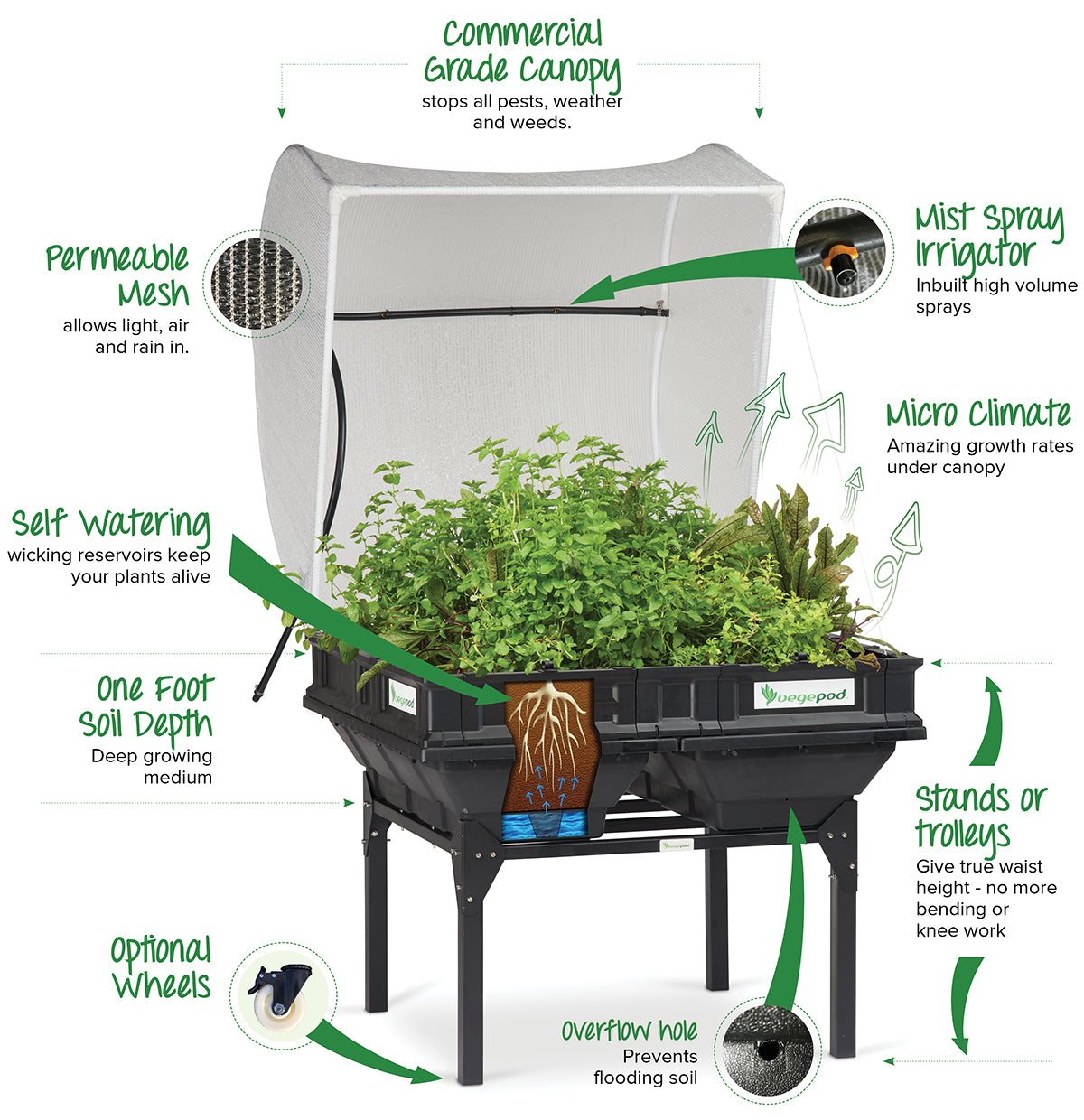If you’re thinking about what is the best way to plant your vegetables, a Vegepod planter is what you need! And, you’re in the right place to learn how you’d set up a vegetable planter like a Vegepod. Or, if you’ve only just began your journey with a Vegepod, congratulations and welcome to the Vegepod family! We are here to help if you need us, and we have a great community of podders who are willing and able to share their experiences and advice too. To help get you started, we have a quick, general guide if you're a beginner at podding and need some advice.
SOME THINGS TO CONSIDER
Sunshine!
When planting in your raised garden bed, make sure the taller plants are at the back of whichever way the sun hits the Vegepod. Just like your old school photos, tall at the back, and short at the front, so that the camera can see everyone! This gives all of the plants a chance to soak up as much sunlight as possible throughout the day. It’s a very strategic way to plant your veggies, but it’s for good reason. As a general rule, herbs and low-leaf root vegetables should go at the front wherever the sun hits, while taller climbers such as cherry tomatoes and beans should be at the back.
Size Counts
Size matters in the Vegepod! That is to say, always check the recommended plant spacing before adding in seeds and punnets. Root vegetables particularly may need space as they can get bulky underground.
If you’re not sure about spacing (or just can’t be bothered getting out the old ruler) you can always try the ‘ruthless horticulturalist technique’. This involves sprinkling a whole bunch of seeds in a particular area and when the veggies sprout, pulling out the weaker ones to make room for the strong looking shoots - a mini version of Darwin’s survival of the fittest if you will. Vegepods can cater to many different gardening styles, which really does make it the dream vegetable planter.
Play the field
In some ways, planting in the Vegepod garden bed is like a complex sports play. You want to think about timing, spacing and good combinations. Here are some quick examples for each.
Timing: We’d all like an abundance of lettuce, just not at the same time. So plant some seedlings a week apart for a few weeks so you have your veggies staggered in time with your needs. On another note, be sure to plant seasonal veggies too. See our blog ‘What to Plant In Summer’ to find out the best veggies for this season.
Spacing: The sun is the most important factor when it comes to spacing, but other aspects should be considered as well. For example, soil. Consider planting plant rich, fertilised soil on one side of the pod where the leafy greens go. On the other side, add sandier, loamy soil that will host hardier varieties such as root veggies like carrots, rosemary and such (it’s a treat ‘em mean keep em keen strategy to get root vegetables to flex their muscles).
Combinations: This basically refers to companion planting, where you plant vegetable families that like each other next to each other. Check out Tui Garden’s great guide to companion planting to see a list of common pairings.
Brown Thumb Plants
For those of us who are brown thumbs struggling with what and how to plant (which all of us at Vegepod were - hence why we created the pods!) just know this: mint, basil, cherry tomatoes and leafy greens such as silverbeet, spinach (plant shoots) are a sure-fire win. Shade- loving herbs grow like weeds in the pod and are actually difficult to kill. Anything that’s a large fruit or root you’ve got to work a bit harder for. And remember, no one will criticise if you just take a shot in the dark and spray seeds everywhere and just watch the clock to see what sprouts as an alternative! With Vegepods, there’s no doubt that this kind of method will grow something, that’s why it’s here.
Vegepods allow you to be flexible with your planting, and can prolong growing seasons. So whatever method you choose, go for gold, and have fun!

